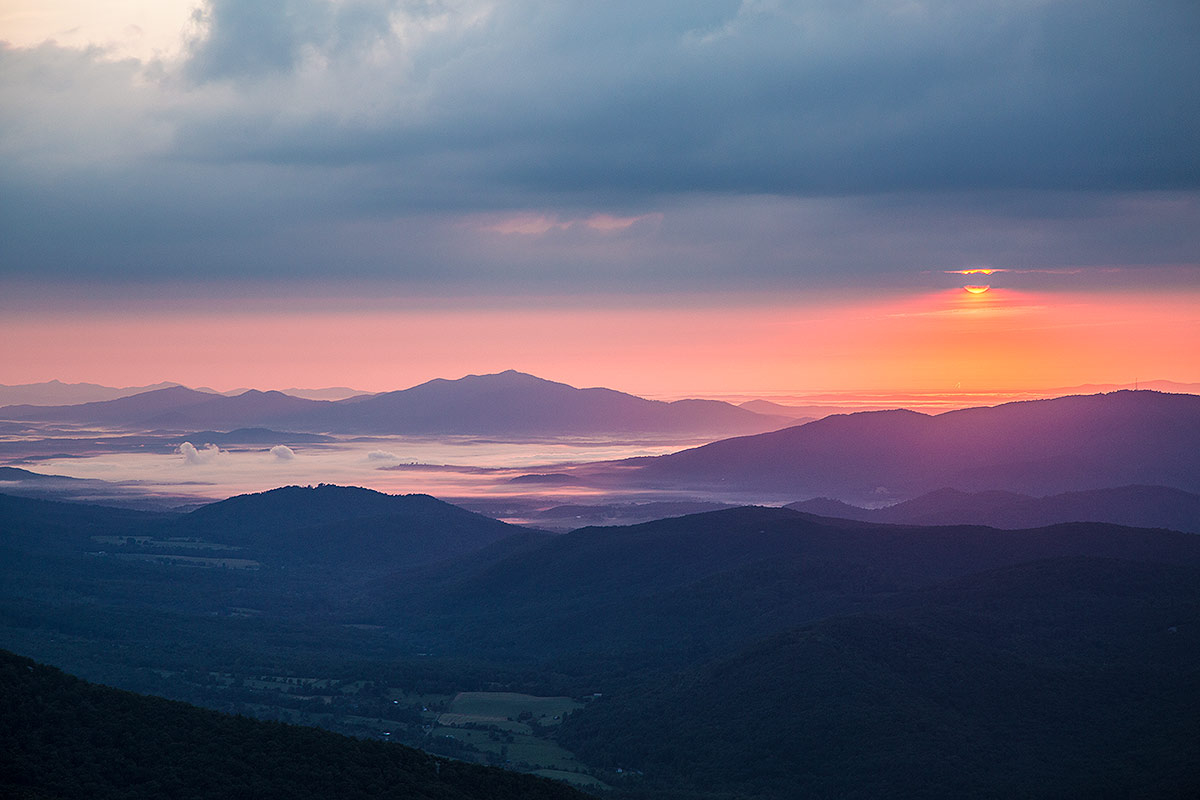Photographing Landscapes
Have you ever admired beautiful pictures of landscapes and wondered how to get those same great results? In this post, I’ve given a few tips that I’ve found helpful when shooting landscapes. Whenever I get the opportunity, I love to find beautiful landscapes to photograph around Virginia. While landscapes may seem simple and easy to shoot, focusing on your lighting and composition can really make a difference and create stunning results.
Golden Hour
When shooting a landscape, use the golden hours in the morning or evening to enhance your scene. Planning ahead for the best lighting and weather conditions can be an effective way to improve your scene. While shooting during the day isn’t terrible, it will create a lot of harsh light and shadows. The golden hours, however, are softer and have a warmer, more interesting color that can’t be replicated during the day. Also, if you get up in the morning during the golden hours, you will often find morning dew and mist that adds a stunning feel to your images.
Create Depth
Use a small aperture to keep all the areas of the image in focus when shooting landscapes. This is the normal approach to landscapes and helps create a sense of depth in your scene. While using larger apertures can be an interesting and creative approach, I typically like the smaller apertures and sharp, in-focus scenes. Diagonals and leading lines are really good ways of creating depth as it draws your attention into a scene.
Type of Lens
While you can shoot a landscape using other lenses, a wide lens will be your best friend for those expansive sweeping landscape scenes. 21 or 24mm lenses are ideal for capturing wider angles. Remember to try different angles, even with a wide angle lens. Don’t just assume a wider angle lens will do the work for you. Always be creative and try to find the angle that best captures the landscape scene.
Composition
Composing your scene properly is so important when shooting landscape. It’s easy to just point a camera at a scene at random, but instead really consider how you are building your image. The rule of thirds is a traditional and solid way to compose your scene to make it visually appealing, but also consider other ways to improve your composition. Look for leading lines or “S” curves to pull your attention into a scene. Symmetry can also be an interesting way to compose a landscape. One of my favorite ways to compose landscapes and add interest to a scene is through focal points. Use subjects around you like trees, flowers, or water to focus on. By finding a interesting subject in the foreground, it can also really help create a depth of field in a landscape image. Another favorite of mine is using water as a mirror. You can capture amazing pictures using the effects of reflections in water. This is especially effective during the golden hours.
Conclusion
Landscapes are a beautiful subject to capture and are very popular among photographers. Waiting for the right lighting and weather to effectively photograph a scene can be time consuming, but if you are patient, the results are well worth the effort.


